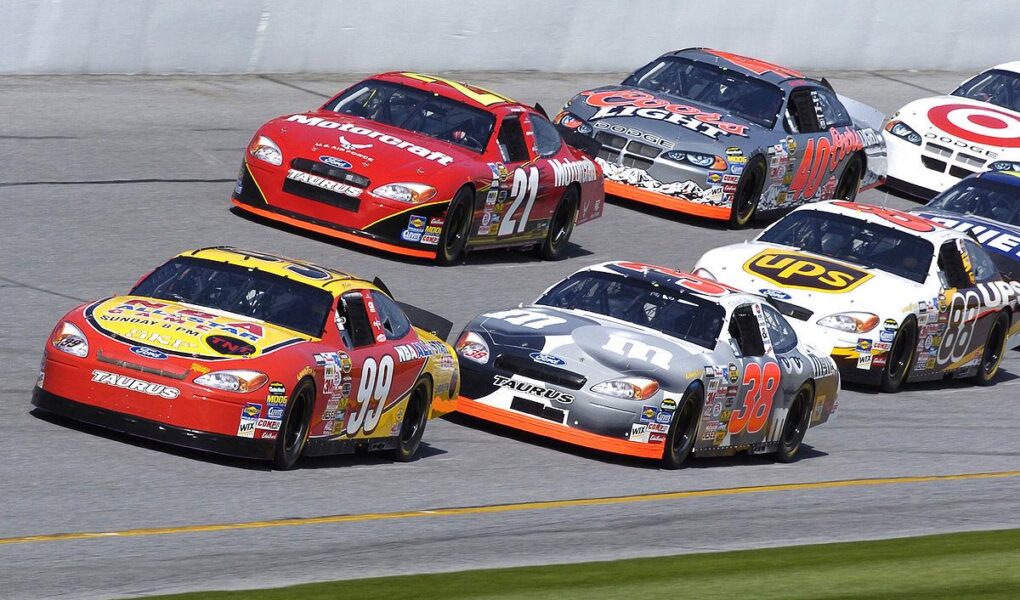Title: The Roar of the Track: Exploring the World of Stock Car Racing
In the heart of America’s motorsport culture lies a phenomenon that captures the adrenaline of speed enthusiasts and the curiosity of casual observers alike: stock car racing. With their powerful engines rumbling and tires screeching on speeding asphalt, these race cars are more than just a blend of engineering and artistry; they are symbols of a deep-rooted tradition that blends competition, camaraderie, and the pursuit of glory. Whether zooming around iconic tracks like Daytona and Talladega or navigating the dynamic challenges of short tracks, stock car racing offers a thrilling spectacle that draws millions of fans into stadium seating and living rooms alike. As we rev up to explore the intricacies of this electrifying sport, we will dive into its history, the mechanics behind the machines, and the passionate community that makes stock car racing a unique cornerstone of American culture.
Table of Contents
- The Thrill of the Track: Understanding the Dynamics of Stock Car Racing
- Behind the Scenes: The Engineering Marvels That Fuel Performance
- Mastering the Curve: Tips for Drivers to Enhance Handling Skills
- Fan Engagement: Building Community and Passion in Stock Car Racing
- Q&A
- Future Outlook
The Thrill of the Track: Understanding the Dynamics of Stock Car Racing
Stock car racing is not just about speed; it’s a fascinating interplay of engineering, strategy, and raw human emotion. Each vehicle is a marvel of modern technology, designed to withstand the intense physical demands of the track. Racing teams work meticulously to optimize the aerodynamics, suspension, and engine performance, ensuring every car can handle the unique challenges of oval tracks. Drivers are not merely athletes; they are skilled tacticians, making split-second decisions that can mean the difference between victory and defeat. Elements like tire wear, fuel management, and track position play crucial roles in the racing strategy, creating a thrilling spectacle for fans and participants alike.
The dynamics of stock car racing can be broken down into several critical components that dictate race outcomes. Consider the following factors:
- Drafting: A technique that allows drivers to reduce air resistance by closely following another car.
- Pacing: Managing speed throughout the race to conserve fuel and tire grip.
- Pit Stops: Strategically timed stops for fuel, tires, and repairs that can greatly influence race results.
Understanding these dynamics creates a deeper appreciation for the sport. Below is a simple table illustrating the importance of pit stops in a race:
| Pit Stop Type | Average Time (seconds) | Impact on Race |
|---|---|---|
| Fuel Only | 10 | Minimizes downtime for fast refueling |
| Tires Only | 12 | Focus on grip performance |
| Full Service | 15 | Optimal for complete performance adjustments |
Behind the Scenes: The Engineering Marvels That Fuel Performance
As engines roar to life and tires screech against the asphalt, it’s the cutting-edge engineering that stands behind each exhilarating moment on the racetrack. Stock car racing is not merely a sport; it represents the pinnacle of performance engineering, where every component is meticulously designed for optimal speed and handling. The synergy between aerodynamics, suspension systems, and powertrains creates a finely-tuned machine that can navigate sharp turns and straightaways with unparalleled agility. Each car is a culmination of advanced materials and technology, including:
- Lightweight composites – reducing mass without sacrificing strength.
- Precision-engineered brakes – ensuring safety and control at high speeds.
- Advanced telemetry systems – providing real-time data for performance optimization.
Additionally, the collaboration between engineers and drivers is crucial in translating raw power into explosive performance on the track. Every minor adjustment can make a significant difference in lap times, making continuous innovation a necessity in this fiercely competitive arena. Consider the table below, which highlights key specifications of a typical stock car:
| Component | Specification |
|---|---|
| Engine Type | V8 (minimum 358 cubic inches) |
| Suspension | Independent front, solid rear axle |
| Weight | 3,300 lbs minimum |
| Tire Size | 15-inch diameter |
Mastering the Curve: Tips for Drivers to Enhance Handling Skills
To truly excel in stock car racing, mastering how to handle curves can set you apart from the competition. The ability to maintain speed and control through turns is essential for achieving faster lap times. Here are some key strategies to enhance your curve-handling skills:
- Understand the Racing Line: Familiarizing yourself with the ideal path through a curve can greatly improve your speed. Aim to enter wide, hit the apex, and exit wide.
- Throttle Control: Smooth acceleration is crucial when navigating curves. Practice easing on the throttle as you approach and exiting the turn to maintain traction.
- Brake Gradually: Instead of slamming on the brakes, ease into deceleration. This technique keeps weight shifting appropriately and your tires gripping.
- Aiming Visual Reference: Pick a spot on the track where you want your car to go. This practice helps you focus and enhances your ability to steer accurately.
In addition to these tips, understanding your vehicle’s unique handling characteristics is vital for improvement. It’s beneficial to track your vehicle’s setup and performance. Here’s a simple table to help you keep track of this data:
| Parameter | Setting | Notes |
|---|---|---|
| Camber Angle | -3° | Increases grip in corners |
| Tire Pressure | 30 PSI | Optimize contact patch |
| Stabilizer Bar | Soft | Better cornering flexibility |
| Spring Rate | 700 lb/in | Balancing comfort and stiffness |
Fan Engagement: Building Community and Passion in Stock Car Racing
In the exhilarating world of stock car racing, fostering a community of devoted fans is essential for the sport’s long-term vitality. Engaging fans goes beyond just thrilling races; it’s about creating an atmosphere where passion for the sport thrives. Teams and drivers have embraced this ethos by utilizing various digital platforms to connect with fans on a personal level. For instance, social media channels serve as vibrant hubs for interaction, where fans can share their thoughts, live-tweet races, and participate in exclusive behind-the-scenes content. This direct line of communication not only humanizes drivers and teams but also builds a sense of camaraderie among fans, leading to deeper loyalty and support.
In addition to digital engagement, live events play a critical role in strengthening community ties. Activities such as fan meet-ups, pit tours, and autograph sessions provide immersive experiences that allow fans to feel a part of the racing family. Here are some effective strategies to enhance fan interactions:
- Interactive Experiences: Organize events where fans can engage with drivers, attend Q&A sessions, and take part in race simulations.
- Exclusive Content: Share behind-the-scenes videos, sneak peeks of merchandise, or live feeds during practice sessions to keep fans excited.
- Fan Challenges: Host competitions that encourage fans to show their support creatively through art, video challenges, or social media campaigns.
By prioritizing fan engagement, stock car racing can cultivate a vibrant, enthusiastic community that not only follows the races but also participates in the sport’s culture. This commitment to fostering passion is what will ensure that stock car racing remains electrifying for generations to come.
Q&A
Q&A on Stock Car Racing
Q1: What is stock car racing?
A1: Stock car racing is a form of motorsport where specially modified vehicles, often resembling production cars, compete on oval tracks or road courses. Known for its high speeds and thrilling competition, stock car racing has evolved from humble beginnings into a major sport, most famously represented by NASCAR (National Association for Stock Car Auto Racing).
Q2: How did stock car racing originate?
A2: Stock car racing traces its roots back to the Prohibition era in the United States during the 1920s and 1930s. Bootleggers would modify their cars to outrun the law while transporting illegal alcohol. This illicit activity gave rise to informal races, which eventually crystalized into organized racing events featuring modified vehicles.
Q3: What makes stock car racing unique compared to other forms of motorsport?
A3: The unique blend of speed, strategy, and close-contact racing defines stock car racing. Participants often race in tight packs, making bumping and drafting commonplace. Unlike open-wheel racing, where cars are built solely for performance, stock cars must navigate the delicate balance between speed and durability while retaining a semblance of their original design, thereby appealing to fans with a connection to everyday vehicles.
Q4: What are the major leagues or series involved in stock car racing?
A4: The most prominent series in stock car racing is NASCAR, which includes several tiers such as the NASCAR Cup Series, Xfinity Series, and Camping World Truck Series. Additionally, there are other organizations like the ARCA Racing Series and regional tours that contribute to the rich tapestry of stock car racing across the country.
Q5: Can anyone participate in stock car racing?
A5: While stock car racing may seem accessible, it requires a considerable investment of time, money, and skill. Aspiring drivers often start in local racing leagues and must obtain the necessary licenses and certifications. Additionally, they need to invest in safety gear and a competitively prepared vehicle. However, various programs and racing schools exist that offer training for those interested in entering the sport.
Q6: What types of vehicles are used in stock car racing?
A6: Stock car racing features vehicles that are heavily modified versions of stock production cars, typically based on popular models from manufacturers like Chevrolet, Ford, and Toyota. These cars are built for speed and safety, equipped with roll cages, specialized engines, and advanced aerodynamics to endure the rigors of competition.
Q7: What role does technology play in stock car racing?
A7: Technology is paramount in stock car racing, influencing everything from vehicle design to race strategy. Teams utilize advanced telemetry systems to collect and analyze data on vehicle performance, which helps fine-tune setups and improve lap times. Additionally, developments in materials and safety equipment, such as carbon fiber and improved crumple zones, have enhanced both performance and driver safety.
Q8: How does stock car racing engage with its fanbase?
A8: Stock car racing has a vibrant culture that fosters a deep connection with its fans. From pre-race festivities to driver meet-and-greets, the sport emphasizes fan engagement. Platforms such as social media and interactive apps allow fans to follow their favorite drivers, participate in fantasy leagues, and experience races from new perspectives, further enhancing their connection to the sport.
Q9: What are some common misconceptions about stock car racing?
A9: One common misconception is that stock car racing is merely about going fast. In reality, it involves a complex interplay of strategy, teamwork, and precise driving skills. Additionally, some might think that the sport lacks diversity; however, the landscape is gradually evolving, with more female drivers, diverse teams, and varied representation as the sport continues to grow and adapt to modern audiences.
Q10: What’s the future of stock car racing?
A10: The future of stock car racing is poised for growth and change, with increasing efforts to modernize the sport through enhanced safety measures, sustainability initiatives, and more inclusive practices. As technology continues to evolve, racing organizations are exploring options like electric vehicles and hybrid powertrains, promising an exciting new chapter for both fans and participants alike.
Future Outlook
As we round the final corner of our exploration into the world of stock car racing, it’s clear that this high-octane sport is more than just speed and adrenaline; it’s a tapestry woven with tradition, technology, and an undeniable sense of community. From the roar of the engines to the jubilation of the fans, stock car racing embodies a unique blend of precision and passion that captivates millions around the globe.
Whether you’re a seasoned fan, a curious newcomer, or someone simply captivated by the thrill of competition, stock car racing offers a glimpse into a realm where strategy meets sheer power on the asphalt. As the checkered flag waves and the victor celebrates, the stories—of triumph, resilience, and innovation—continue to unfold, ensuring that this beloved sport remains a dynamic fixture in the landscape of motorsports for years to come.
So, whether you’re planning to attend a local race, delve deeper into its history, or even start your own journey in the driver’s seat, remember that every lap tells a story. And with each race, the legacy of stock car racing only grows richer, inviting all of us to be a part of its ever-evolving narrative.



